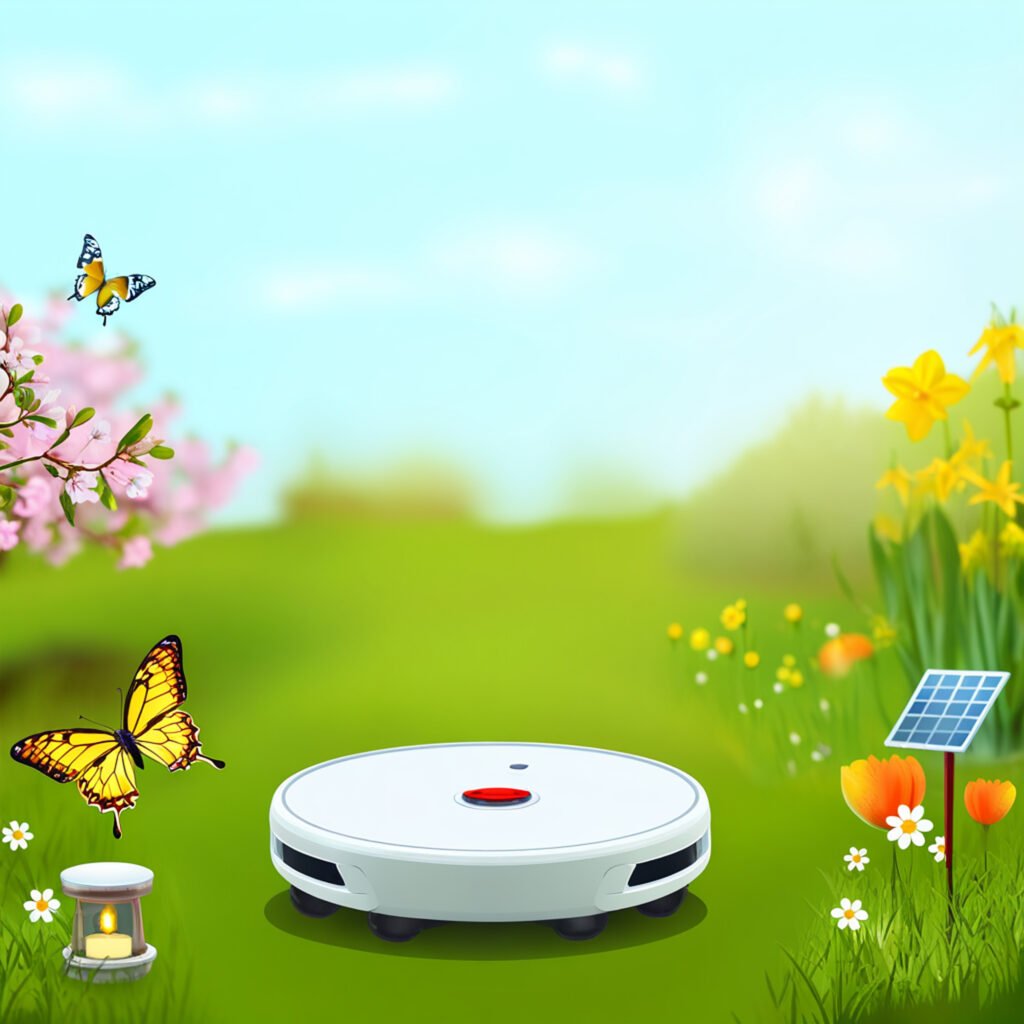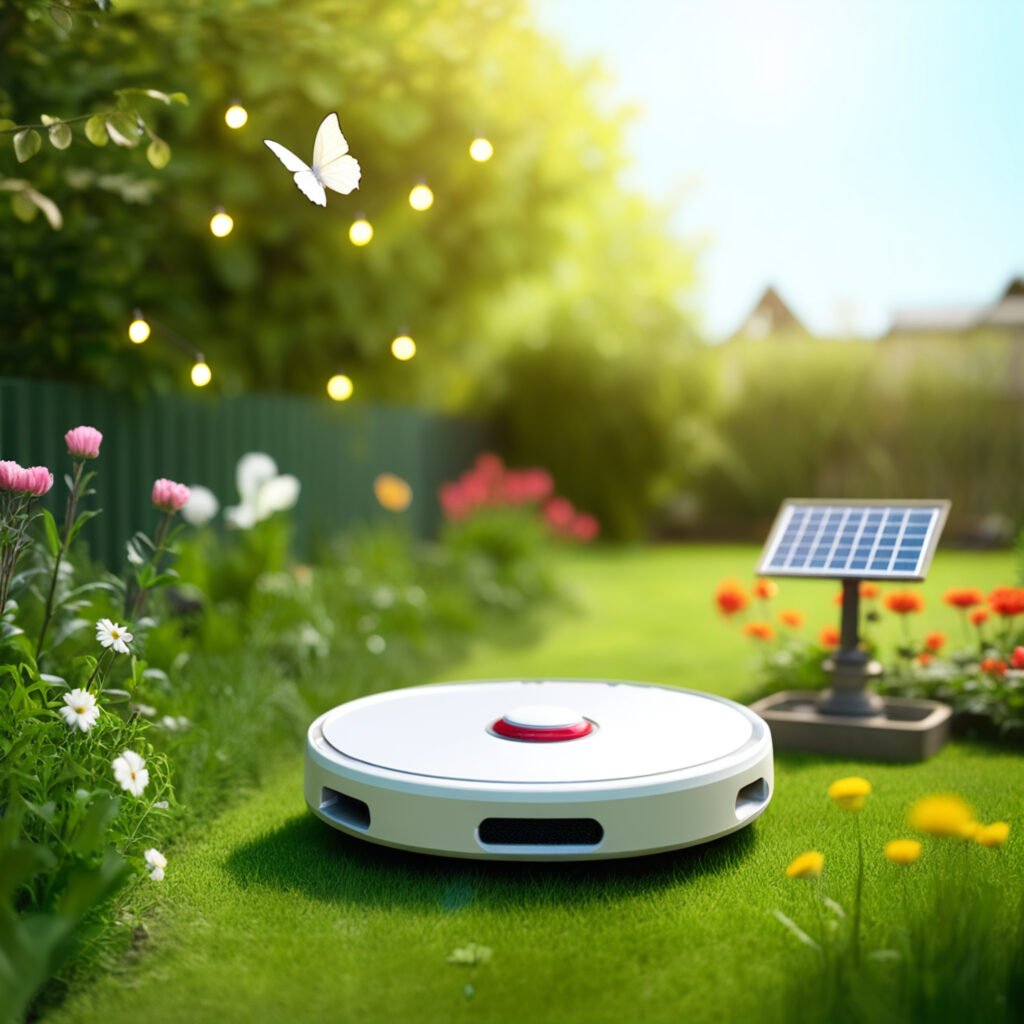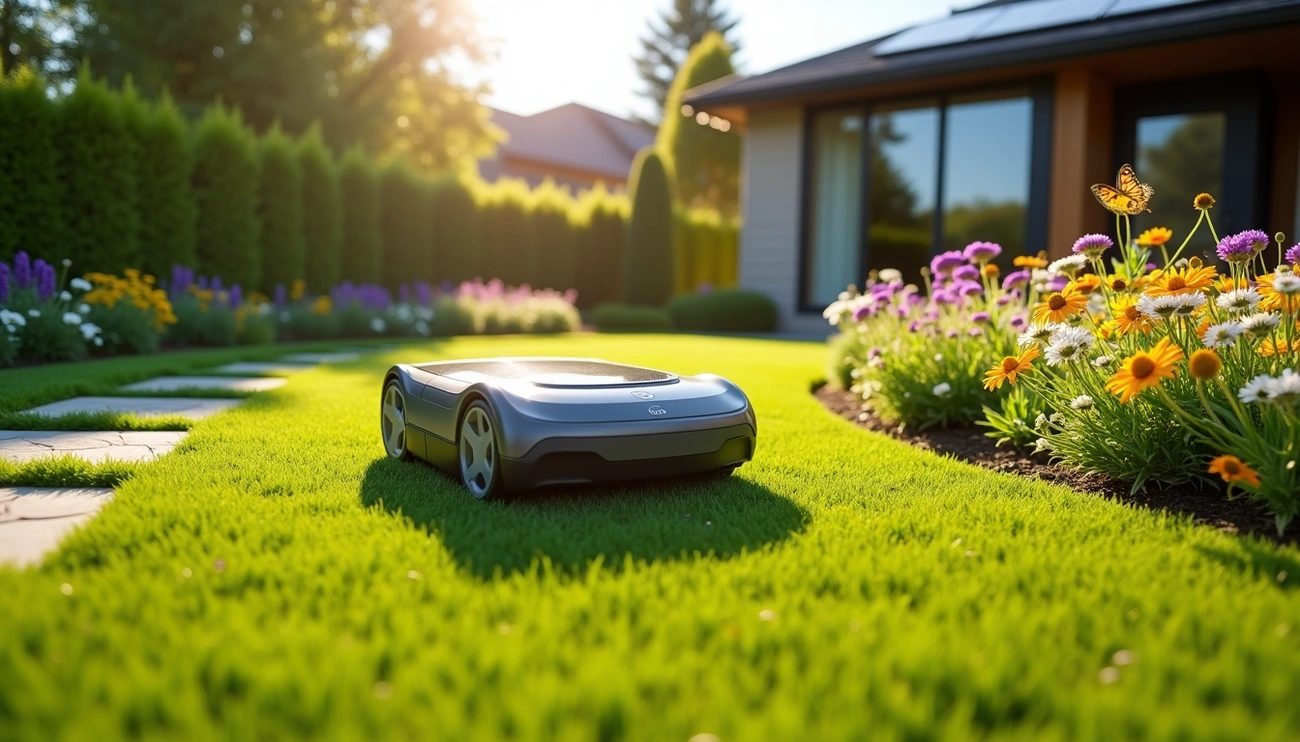Auto robot lawn mowers are revolutionizing how we maintain our yards and help our planet. Studies show that a gas mower running for one hour creates emissions equal to driving a car for over 100 miles. We can’t ignore this effect on our environment.
Your yard deserves better than polluting gas-powered equipment. Robot mowers give you a cleaner way to care for your lawn and protect the environment. These machines create zero emissions and then lower your carbon footprint while keeping your lawn beautiful. These residential robotic lawn mowers work on their own. You get your weekends back, and your neighborhood becomes more peaceful with nowhere near as much noise pollution.
This piece will show you how automated lawn technology creates an eco-friendly garden paradise. We’ll get into the environmental benefits of electric solutions and share practical tips to design a greener outdoor space with your robotic helper.
The problem with traditional lawn care
Your lawn care routine might cost you more than you think. The environmental impact of traditional lawn maintenance goes way beyond your wallet, and it’s time we think about how we take care of our yards.
Gas-powered mowers and emissions
Gas-powered lawn equipment pollutes much more than you’d expect. A gas-powered lawn mower running for an hour creates eleven times more emissions than a new car during the same time. The EPA’s findings show that your mower can release as much pollution in one hour as driving a car for 100-500 miles.
These numbers paint a grim picture. Back in 2011, lawn and garden equipment that ran on gas released about 26.7 million tons of pollutants into our air. The harmful substances released include:
- Carbon monoxide
- Nitrogen oxides
- Volatile organic compounds
- Fine particulate matter
Gas-powered lawn care makes up 5% of all U.S. air pollution, with urban areas showing even higher numbers. The California Air Resources Board made a startling prediction – by 2020, gas-powered leaf blowers and lawn mowers in California would create more ozone pollution than all the state’s cars combined.
Time and labor involved in manual mowing
Traditional lawn care takes a big chunk of your time. Americans spend about 3.4 hours each week taking care of their lawns. Most of this time goes into mowing, gardening, and raking leaves.
The numbers add up quickly over time. With a typical yard of 0.15 acres, you’ll spend between 7 and 48 days of your life just cutting grass. The average homeowner will mow their lawn more than 1,000 times in their lifetime – that’s about 16 days or 384 hours.
Money becomes another concern. Homeowners who maintain their own yards spend about $55 monthly on lawn care, and these costs keep rising with inflation.
Noise pollution and neighborhood disruption
Regular lawn equipment creates a lot of noise. Gas-powered mowers can hit sound levels of 95 decibels near the operator’s ear. This level sits high above the World Health Organization’s daytime sound guideline of 55 decibels.
The noise reaches WHO limits even 800 feet away from where you’re mowing. This loud noise can damage your hearing, reduce cognitive performance, disrupt sleep, and raise your risk of heart problems.
Auto robot lawn mowers run quietly, unlike traditional equipment that disturbs local wildlife. Birds and mammals struggle to communicate, mate, and find food when these noisy machines are running.
How auto robot lawn mowers work

Smart technology powers every auto robot lawn mower that makes yard maintenance easier. These devices have come a long way from their basic beginnings and now deliver exact cuts with convenience and environmental benefits.
Sensors and navigation systems
Today’s mowing robots use cutting-edge navigation tech to guide themselves around your lawn. Most basic models rely on a boundary wire system around your lawn’s edges that sends signals to keep the mower in check. The latest models have evolved beyond simple wires and now use GPS combined with advanced sensors for better guidance.
Premium auto mowers utilize RTK (Real-Time Kinematic) GPS tech to achieve centimeter-level accuracy. This precision lets them map your yard and move systematically without physical markers. The latest models come equipped with:
- LiDAR sensors that see everything around them
- Camera systems that spot obstacles
- AI tech that recognizes more than 200 different objects
These smart features help mowers spot barriers, avoid crashes, and cover every inch of your lawn without you lifting a finger.
Battery-powered operation
These mowers run on rechargeable lithium-ion batteries that are light and charge quickly. The mower heads back to its charging dock automatically as the power gets low. It takes 30 minutes to 2 hours to charge fully, and then it picks up right where it stopped.
Battery life differs between models. Basic mowers last 30 minutes, while top-end units can run for over 4 hours. Some models work for up to 240 minutes on one charge.
Smart scheduling and app control
Your robotic lawn mower connects to your phone through Bluetooth, Wi-Fi, or cellular networks. The apps let you:
- Create custom mowing schedules
- Watch your mower’s progress immediately
- Set up virtual boundaries and different mowing areas
- Get updates about your mower
Top models work with smart home systems and listen to voice commands through Alexa. You can control your automated lawn care from anywhere.
Eco-friendly benefits of automated mowing
Robotic lawn mowers offer amazing environmental benefits that go beyond making your life easier. These state-of-the-art machines are a real step forward in eco-friendly yard care.
Zero emissions with electric auto mowers
Electric mowing robots produce zero emissions, while approximately 242 million tons of pollutants come from gas-powered lawn equipment each year. This difference is significant enough that California has banned gas mower sales from 2024. Research shows that switching from a gas mower to an efficient robotic one could cut CO2 emissions by 0.5 metric tons – about 10% of what an average U.S. car produces yearly.
Reduced energy consumption
Mowing robots are powerful yet energy-efficient. Most models use just 0.5-2 kWh per week, which means you’ll only pay $15-$20 for power each year – much less than gas mower fuel costs. Some users report spending only $3-$4 monthly on power.
Natural mulching for healthier soil
These automated mowers cut grass into small pieces that quickly break down and feed nutrients back into your soil. Your lawn won’t need bags or disposal, and you’ll use less fertilizer. The result is a thicker, stronger lawn that naturally keeps weeds away.
Less noise, more peace
You’ll barely notice these robots working at 55-62 decibels – about as loud as a normal conversation. That’s nowhere near the 90+ decibel roar of gas mowers. The quiet operation means you can run your mower any time without bothering your neighbors.
Minimal waste and maintenance
Electric auto mowers need very little upkeep compared to traditional mowers that need oil changes and new spark plugs. Just clean under the mower sometimes, change blades once or twice a year, and replace batteries every 2-4 years. This simple maintenance means the mower uses fewer resources throughout its life.
Designing a greener garden with your robot mower

Your automated mower does more than keep your lawn tidy. It can be your partner in building a thriving ecosystem. Smart planning helps your electric auto mower turn your yard into a wildlife sanctuary that follows green practices.
Creating mowing zones for biodiversity
Modern residential robotic lawn mowers come with amazing “rewilding” features. They use GPS technology to mark about 10% of your lawn as unmown biodiversity zones. Native plants thrive in these areas and create microhabitats for wildlife. The impact could be huge – if Europeans set aside just 10% of their lawns, the total area would be four times bigger than Europe’s largest nature reserve.
Integrating native plants and low-mow areas
Your auto robot lawn mower works best with native, low-maintenance plants. These plants need minimal water and pruning, which makes them perfect matches for your automated lawn system. You can create “no-mow zones” where grasses and wildflowers grow taller. These zones provide shelter for helpful insects and small animals.
Using mowing robots to support pollinator habitats
Your mowing robot helps local pollinators thrive. Many models now let you customize mowing schedules and zone settings so certain areas grow longer. This approach helps wildflowers bloom and creates homes for bees, butterflies, and other vital insects. These mowers also make tiny grass clippings that break down naturally and enrich your soil.
Water conservation through smart lawn care
Auto mowers paired with robotic irrigation systems can reduce outdoor water consumption by up to 50%. Smart systems use soil moisture sensors to water only when needed. They deliver exact amounts to different zones. Combined with drought-resistant landscaping, this method saves about 7,600 gallons per household each year.
Conclusion
Robot lawn mowers stand out as a remarkable alternative to traditional gas-guzzling equipment. Switching to these mowers saves time and reduces your carbon footprint by a lot. These innovative devices turn grass into tiny clippings that naturally fertilize your soil. They work quietly, so your neighbors won’t hear a thing.
The technology powering these machines keeps getting faster. Modern features like GPS navigation, AI-powered obstacle detection, and smart scheduling work together to create lawns that stay perfect with minimal human input. These mowers also connect seamlessly with other smart home systems, making them a perfect fit for busy homeowners.
Your robotic helper does more than just cut grass – it creates a thriving ecosystem. You can set up biodiversity zones where native plants flourish and support essential pollinators. This comprehensive approach, combined with water-smart practices, reshapes the scene into vibrant, green landscapes. Local wildlife benefits from these changes, and your yard needs fewer resources to maintain.
Quiet, efficient machines are the future of lawn care. Robot mowers lead the transformation toward more thoughtful, eco-conscious outdoor spaces. You’ll get a beautiful lawn without noise, pollution, or the time commitment that traditional methods demand. The real luxury comes from having a perfectly manicured yard while showing respect for nature and your community.

